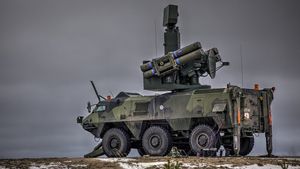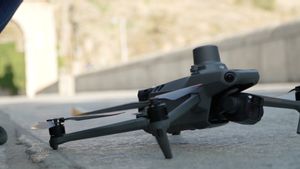JAKARTA - The Indian Space Research Organization (ISRO) managed to enter the lunar orbit with Chandrayaan-3. The next mission will direct the spacecraft to the Moon's south pole.
"Today, the Chandrayan-3 mission reached an important milestone with the successful completion of the Lunar Orbit Investigation (LOI)," ISRO said in a statement.
"The insertion was carried out retro-burning in Perilune for 1835 seconds, starting at 19.12 IST. The maneuver produced an orbit of 164 km x 18,075 km, as referred to," he added.
This achievement is the third successive time ISRO has successfully loaded its spacecraft into lunar orbit, in addition to doing so into Mars orbit.
India is a country that competes with the United States (US), China, Europe, and Japan which also have a mission to set foot on the Earth's natural satellite.
As the mission progresses, a series of maneuvers have been planned to gradually reduce Chandrayaan-3's orbit and position it above the Moon's south pole.
After several maneuvers, the propulsion module will separate from the lander while in orbit. Then, the spacecraft will perform a complicated series of braking maneuvers to facilitate soft landing in the Moon's south pole region on August 23, 2023.
The six-wheeled rover, going out and roaming around rocks and craters on the Moon's surface, collects important data and images sent back to Earth for analysis.
ISRO stated that currently Chandrayaan-3's health condition is very normal and will continue to be monitored from Mission Operations Complex (MOX) at ISRO Telemetry, Tracking, and Command Network (ISTRAC), Indian Deep Space Network (IDSN) antenna at Byalalu, near Bengaluru, with the support of the European Space Agency (ESA) and the JPL Deepspace antenna.
VOIR éGALEMENT:
Launching BBC International and The Independent, Monday, August 7, the Moon's south pole is largely unexplored. This is a surface area that remains in a shadow much larger than the Moon's north pole, and scientists say there is a possibility of water in a permanently overshadowed area.
For information, India has previously tried to land a robotic spacecraft near the Moon's south pole. But ended in a failure in 2019.
As the plane enters lunar orbit, it loses contact with its lander that crashed during its final descent to deploy its rover, which aims to find signs of water there.
The English, Chinese, Japanese, Arabic, and French versions are automatically generated by the AI. So there may still be inaccuracies in translating, please always see Indonesian as our main language. (system supported by DigitalSiber.id)





















